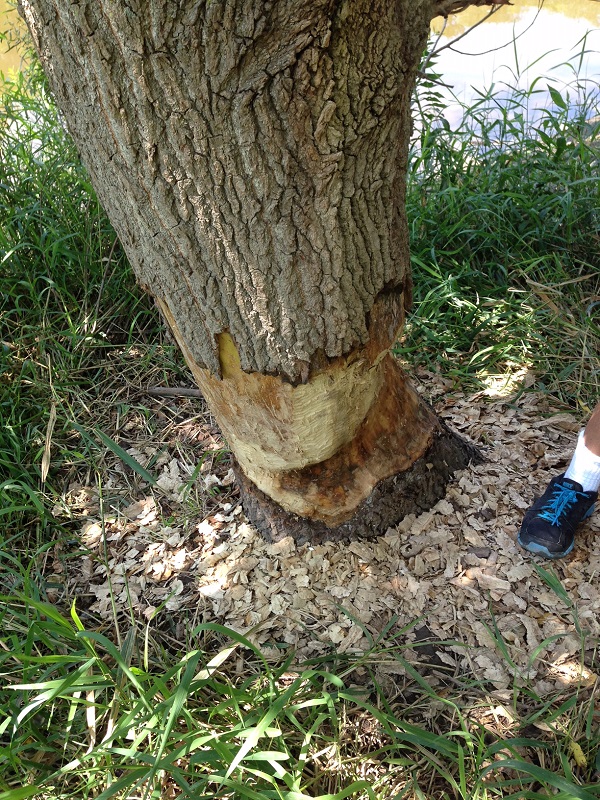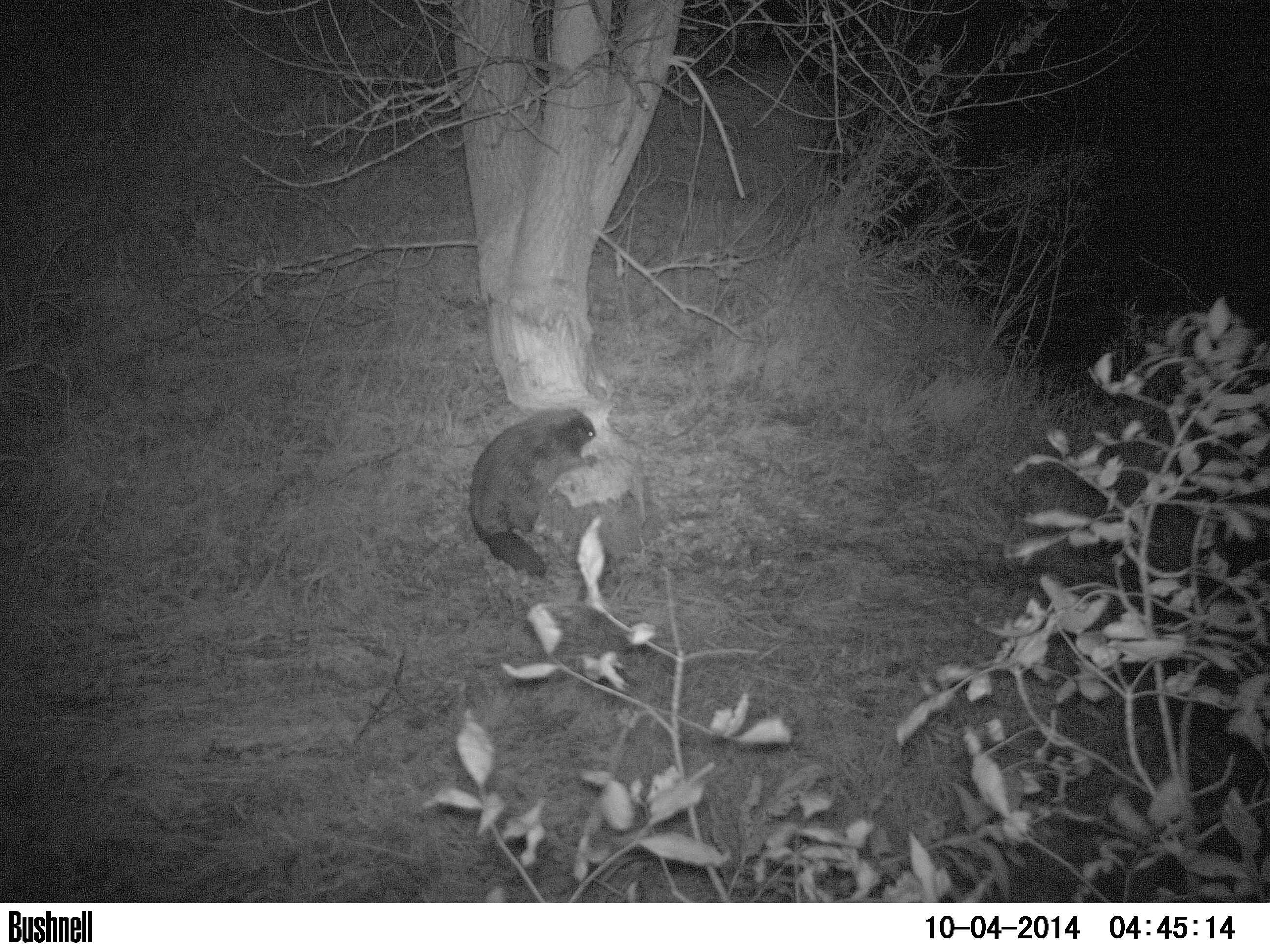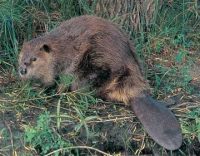I have been monitoring mammal populations in Riverside Park since 2006, and since that time, I have ever only known of a few signs of possible beaver activity in Riverside Park. In 2007, there were two separate reports (one highly credible) of a beaver seen swimming along the river by the Locust Street Bridge. Then sometime around 2009, a tree in the park was found with possible beaver chew, but the chew never grew in size and further activity was never documented. There were other miscellaneous reports of beavers swimming in the Milwaukee River over the years, but they always turned out to be muskrats that had been misidentified, and so it seemed Riverside Park was without a beaver population.

But, was the beaver a new resident too? We monitored the chewing progress on the tree over several weeks and noticed a couple of other trees also starting to show signs of beaver chewing. When it became clear that the beaver was trying to take down the large cottonwood along the riverbank with the initial chew, we placed a field camera in an adjacent tree to try to photo-document the large rodent. Our first week-long attempt with the camera was unsuccessful and we worried that the beaver may have moved along. Yet several days later, fresh wood chips appeared again at the base of the tree, and so we re-erected the wildlife camera in the tree. Luck was on our side this time and 7 days later we had photographic evidence of Riverside's own Castor canadensis! The beaver was documented in many photos working solo late in the evening for hours at a time (below).

Due to his lack of a lodge and den, the young beaver was able to work inconspicuously for quite some time. But, our beaver could only remain anonymous for so long. One can only chew down so many trees in a public park before people start to notice. When the winter ice melted, the beaver diligently got back to task and his hard work revealed itself. Some called him a vandal, others called him a nuisance, and one - who knew his true identity - even called him a "large rat." And when the news crew showed up on-site, our culprit had no choice but to publicly reveal himself. The jig was up and the beaver claimed responsibility for the "vandalism" he had committed to so many trees in the area.
But, now that our little guy is known to the masses, we hope people will show him a little respect. We have no plans of eradicating our new resident because we're pretty excited about his presence. A beaver is a keystone species and his existence in the park means that habitat quality is pretty good. We've worked hard to improve habitat in Riverside Park and the trees felled by his chewing will provide habitat for a significant number of other species (invertebrates, decomposers, birds, etc.). Chewing deterrents can always be placed around trees if it becomes problematic, so for now, the beaver is free to move around on his own free will.
There are a noticeable number of new trees down in the Riverside Park area and the big question is whether our beaver friend is still working alone. We hope to put up field cameras in the area again this spring and photo-document any new activity. Because, who knows, maybe there is a Mrs. Canadensis too! And maybe I'll be lucky enough to stumble upon the couple's den tucked along the river bank under a large willow somewhere. Or maybe I'll find their litter of plump, furred kits romping along a clump of downed twigs. And I'll keep it a secret. At least for a moment. I'll savor that period in time before our friends were celebrities, and selfishly, I'll etch every detail in my brain. But, I promise to share it, because even though I relish the Beaver's pre-TMJ days, I've realized how fun it can be when other people share in a really cool secret. Now we can officially state that our long-toothed friend is our newest resident!
Stay tuned for Part 2 of The Native Animal of the Month: Beaver (Castor canadensis).
* Photo of beaver: purdue.org





